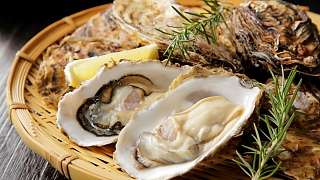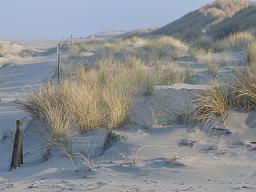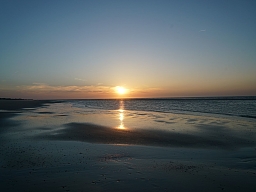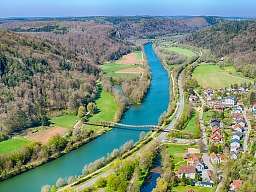Romantik Blog
Collecting oysters for gourmets
Oysters taste like a day at the sea, are light, digestible and full of protein. There are gourmets who travel all the way to Brittany for the delicious shellfish. And then there are gourmets who put on rubber boots and wander through the East Frisian North Sea mudflats with hammer and chisel in their hands to find oysters. This is a great place to collect fresh oysters. With a bit of luck and favourable winds, the tasty delicacies can be picked up directly from the seabed during a walk along the North Sea coast. But beware: if you want to go a little deeper into the mudflats or collect oysters between Juist and the other North Sea islands, you should definitely consult a mudflat guide beforehand. Even if there are few guided oyster tours on the German North Sea coast, unlike in Denmark or Holland, the guides are important sources of information. They know where to find oysters and can provide information about the tides - you should keep an eye on the tides despite your passion for collecting, otherwise a trip to the mudflats can be very dangerous.
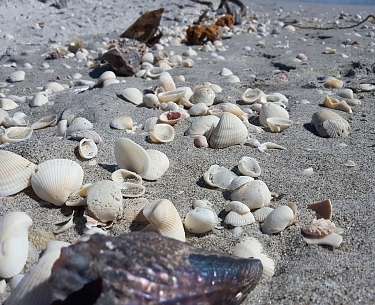
The best time to collect oysters
The best time to look for oysters is from September to April (all months with the letter R). This is the time when the shellfish harvest is most productive. Those who wish can enjoy the oysters directly by the sea, with a view of the sunset. Others bring their haul home in buckets. Collecting oysters is only allowed with restrictions. Like fishing, the "catching" of mussels is subject to the fishing laws of the respective country. However, authorities give the all-clear when asked by telephone. Those who take the precious mussels from the sea only for their own use do not have to fear violating legal requirements.
Tip:
An excursion to the Danish North Sea island of Fanø offers oyster hunting with professional guidance. Here, holidaymakers can go on an oyster safari and search for the precious sea delicacies together or join one of the guided tours. In October, there is an oyster festival on the North Sea island, where top chefs conjure up the most unusual creations from the noble sea delicacies. Would you like a scoop of oyster ice cream?
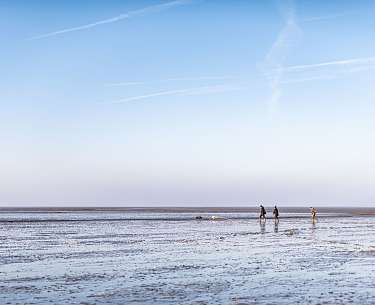
Collecting oysters - the perfect outfit
Unlike stamp collectors, oyster collectors need weatherproof and waterproof clothing, i.e. rubber boots, warm stockings, ski underwear on very cold winter days and, if possible, waders. Gloves are recommended as protection against the often very sharp-edged shells. Professionals also think of tools to loosen the oysters from solid surfaces. Those who want to eat the mussels on the spot should also pack an oyster knife to be able to open the shell.
The correct preparation of the North Sea oyster
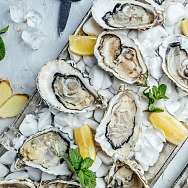


Some prefer to eat oysters raw, drizzled with a little lemon juice or a slightly acidic vinaigrette, others gratinate them with béchamel sauce, dress them with fine pieces of apple, onions and coriander, or put them on the grill. Tastes are different, and this also applies to the preparation of a North Sea oyster. However, for enjoyable consumption, no matter which culinary variant you choose, you should make sure that the oyster is really fresh when collecting or buying it. There are the following characteristics for this: The oyster shells should close tightly when tapped with the fingers. The oyster should resist when you open it. And when sprinkled with lemon juice, its muscles should contract. It should also smell like fresh seawater.
The hardest part of preparing an oyster is getting it open. But with a few helpful tricks, nothing can stand in the way of the noble shellfish pleasure: To avoid cutting yourself, you should place the oyster with the curved side down in a kitchen towel and hold it there. Then carefully prise open the lid at the oyster's sphincter (at the tip) with an oyster knife. After the muscle has been cut, the shell can be opened. Now the meat can be detached from the undershell, smaller shell splinters should be removed from the oyster water. If you want to eat the delicacy raw, enjoy it directly from the shell. But please do not slurp it! In order to fully develop its delicious flavour, the oyster should be chewed before swallowing it.
Hotel tips:
Those who are not among the most passionate oyster eaters will find enough alternatives at the North Sea. Delicious East Frisian specialities with modern components are offered, for example, by the cuisine of the Romantik Hotel Reichshof in Norden. Eel, pike-perch and perch from the Zwischenahner Meer and local game from the region are prepared in the Jäger- und Fischerstube restaurant of the Romantik Hotel Jagdhaus Eiden am See in Bad Zwischenahn. And the best thing is: if you have a taste for it, you can stay. The Romantik Hotels on the North Sea are perfect places to combine culinary delights with wellness. Here, the Romantik Hotel Bösehof is at your service.
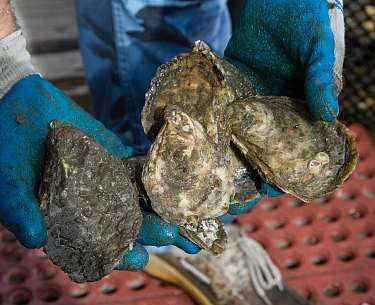
Which oysters are found in the North Sea?
The native European oyster has not existed in the Wadden Sea for some time. It became extinct in the 1930s due to overfishing. The delicious oysters that are served freshly caught in the North Sea are the so-called Pacific oysters and were originally only found off the coasts of Japan and China. Since they were released in the Netherlands in 1964, they have spread further and further and were first sighted in the Wadden Sea in 1991. The Pacific oyster feels right at home in the North Sea and multiplies rapidly at the expense of the blue mussel, as it has no natural predators - all the more reason to feast on it with relish. But the European oyster is also said to be making a comeback in the North Sea. An oyster farm has been under construction on the island of Helgoland since 2017. The first shellfish are to be settled in offshore wind farms in the German North Sea in due course. If the reintroduction works out, the European oyster may once again be native to the Wadden Sea in a few years' time.
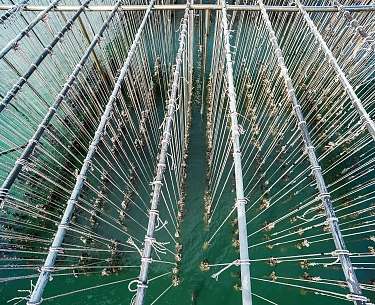
Oyster farm on Sylt
The "Sylter Royal" oyster enjoys a special reputation among lovers of first-class seafood. Germany's only oyster is farmed on Sylt. Thanks to the excellent water quality of the North Sea, it is a top product. Five kilometres off List, the oysters grow on table cultures. Dittmeyer's Austern Compagnie has been supplying the whole of Germany with the Sylter Royal - the only oyster cultivated in Germany - since 1986. The seedlings come from Ireland and lie here on metal racks in so-called poches. Oyster farming is very time-consuming and cost-intensive, because the shellfish have to be nurtured and cared for: The farmers regularly drive out with their tractors to clean the oysters of algae and to turn and shake them so that they grow evenly. The oyster farmers of Dittmeyer's Austern-Compagnie harvest over a million of these noble shellfish every year, which then go to restaurants and delicatessen traders.
No luck with oyster collecting?
If you haven't found an oyster, or have travelled to the North Sea at the wrong time of year for oysters, you can take comfort in the fact that the delicious crustaceans are also available in numerous fish restaurants on the North Sea. On Juist, for example. Connoisseurs order three oysters at the bar in the Juister Auster, enjoy a glass of white wine with them and then take a wonderful walk on the mudflats on the most idyllic of the seven North Sea islands. The mudflats are always beautiful - with or without oysters. And for those who are still not comforted, the 4-star Romantik Hotel Achterdiek is a must. In its unique spa area with a magnificent view of the UNESCO World Heritage Wadden Sea, you can take a sauna, swim and practise serenity over a delicious cup of East Frisian tea. The next opportunity is sure to come.
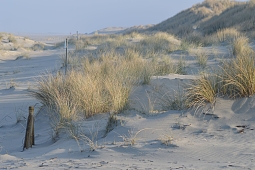

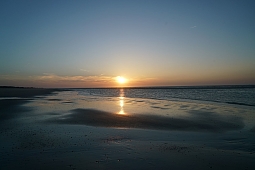
Post your comment
Comments
No one has commented on this page yet.
RSS feed for comments on this page RSS feed for all comments
